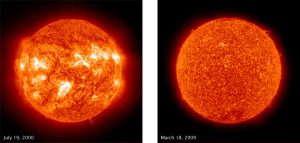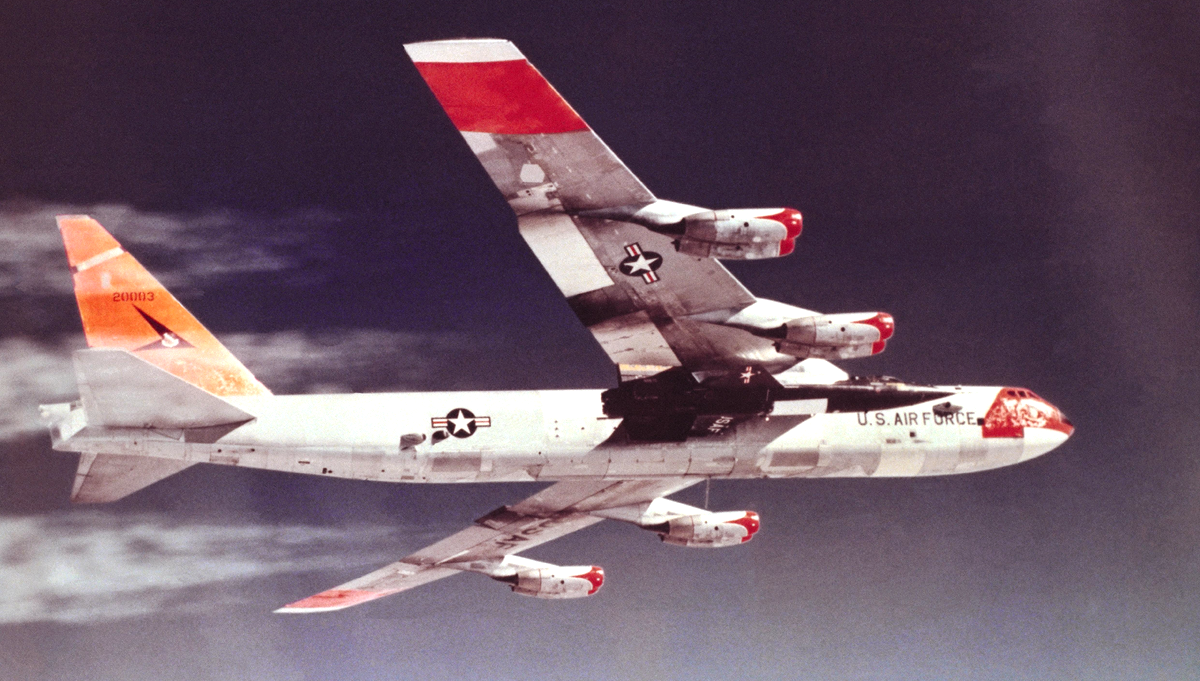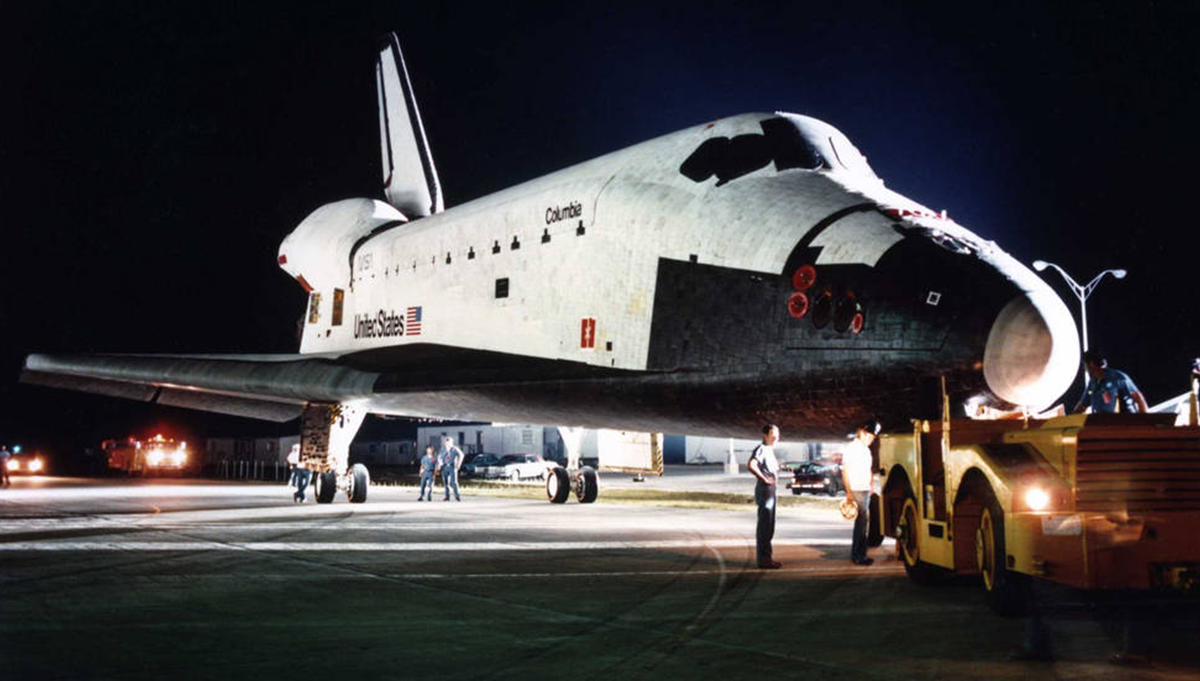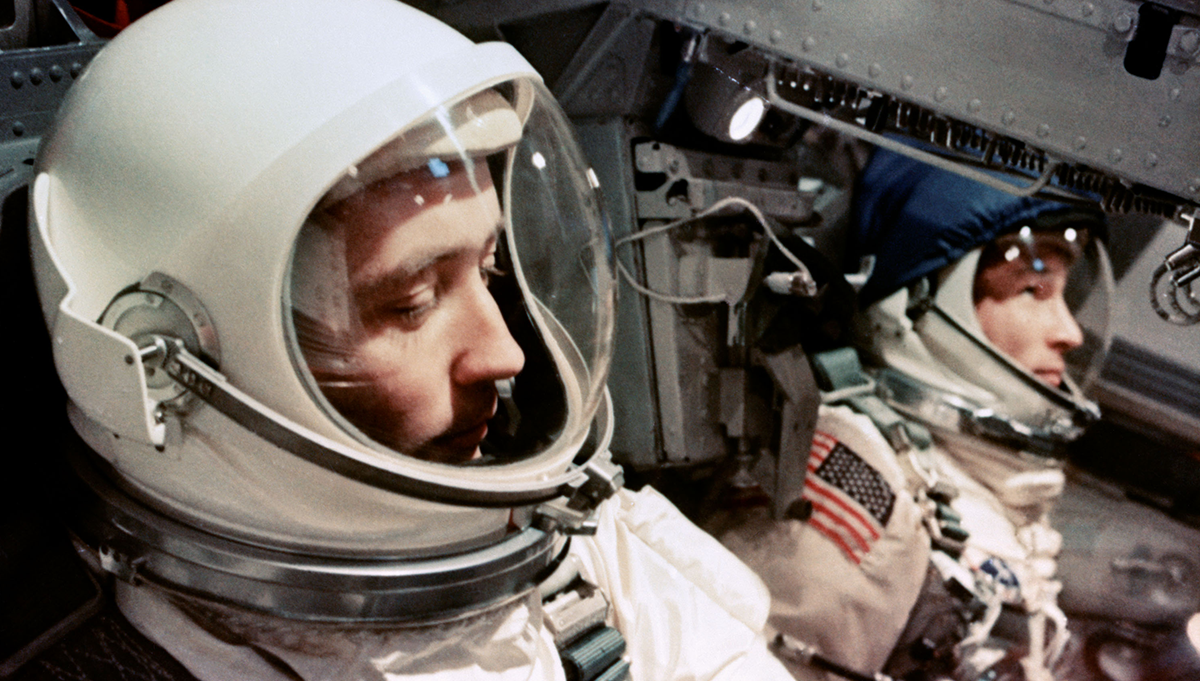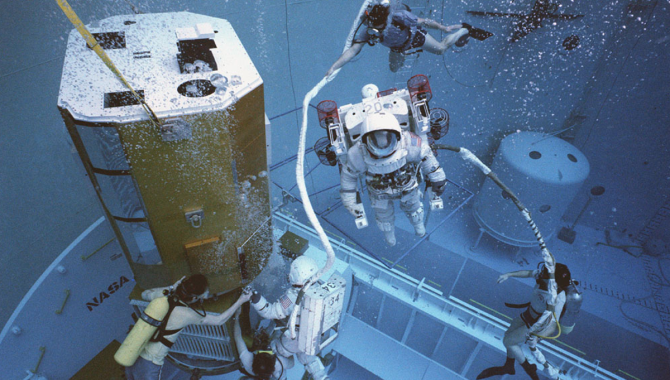
NASA astronauts James D. A. “Ox” van Hoften, and George D. “Pinky” Nelson train to capture and repair the Solar Maximum Mission spacecraft at Marshall Space Flight Center’s Neutral Buoyancy Simulator. The training included using the Manned Maneuvering Unit (MMU).
Credit: NASA/MSFC
Rescued spacecraft examined sunspots, solar flares and more.
As early as the Zhou Dynasty in China, people were recording the appearance of strange dark spots on the Sun. By the mid-1800s, astronomers were beginning to understand more about these sunspots, including that they followed a roughly 11-year-cycle from low activity—the Solar Minimum—to high activity—the Solar Maximum.
By the end of the 1970s, NASA’s Orbiting Solar Observatory program and Skylab’s crewed solar observatory—the Apollo Telescope Mount—had returned a treasure trove of data about the Sun and the sudden explosions of energy known as solar flares. But, in answering those questions, the data raised new questions for scientists.
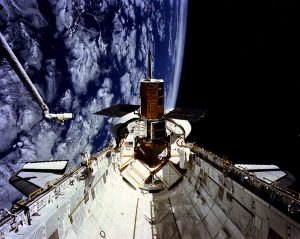
Here, the Solar Maximum Mission Satellite is housed in the orbiter’s cargo bay, demonstrating the capability of the shuttle to rendezvous, service, checkout, and deploy an in-orbit satellite.
Credit: NASA
So, on February 14, 1980—42 years ago this month—NASA launched the Solar Maximum Mission (SMM), timed to observe the Sun during a period of high activity. The spacecraft, about 13 feet long and 7.5 feet wide, carried a suite of state-of-the-art spectrometers, polarimeters, and a polychromator to gather data about the Sun, the radiation produced by solar flares, and the process that creates those flares. The instruments aboard SMM included the Hard X-Ray Burst Spectrometer, which measured the intensity of solar x-ray flares as a way of identifying the role of energetic electrons in the process, and a white-light coronagraph/polarimeter to examine the role of the Sun’s corona in the flare process.
Operating in Low Earth Orbit, the spacecraft performed well until September 1980, when an electronics failure rendered the white-light coronagraph/polarimeter inoperable. The team got worse news in November of that year when the spacecraft’s Attitude Control System failed. Now unable to point instruments at the Sun with the necessary stability, the team put the spacecraft in standby mode. It remained there, wobbling in orbit around the Earth, for more than three years.
On April 6, 1984, the Space Shuttle Challenger launched from Kennedy Space Center on STS-41-C, a mission to deploy NASA’s Long Duration Exposure Facility and capture and repair SMM. Robert L. Crippen, the pilot of the first space shuttle flight, was Commander and Francis Richard “Dick” Scobee was the pilot.
Crippen helped select Mission Specialists Terry J. Hart, James D. A. “Ox” van Hoften, and George D. “Pinky” Nelson for the flight, putting a high priority on skilled astronauts who could work well together. Crippen knew the mission would be challenging, especially the extravehicular activity to capture the wobbling SMM. That was assigned to van Hoften and Nelson. “…great guys and hardworking folks, and they needed to be to do this job,” Crippen recalled in an oral history.
It was the first time a shuttle mission had ever attempted to capture a spacecraft and the crew trained for a year on the bold and intricate maneuvers required. STS-41-C was the second shuttle flight to utilize NASA’s Manned Maneuvering Unit (MMU). The plan called for Nelson to make an untethered spacewalk in the MMU, use a device to grab a post protruding from the SMM, and stop the satellite from wobbling. With the SMM stabilized, Crippen would fly Challenger into position and van Hoften would use the Remote Manipulator System (RMS) to place it into the payload bay.

Astronauts George D. Nelson, left, and James D. A. van Hoften work to change a faulty attitude control module on the SMMS.
Credit: NASA
“Turned out when Pinky flew out about three hundred feet away from the Orbiter, and he came up and did his task perfectly to grab this little fixture, it didn’t capture. He sort of bounced off. He tried again and bounced off. I think he hit it in all about three times. About that time the satellite—it was rotating prior to this around its long axis—but then it started to tumble,” Crippen recalled.
After van Hoften was unable to secure the tumbling spacecraft with an alternative approach using only Challenger’s RMS, Crippen withdrew the shuttle to safety.
“Truthfully, at that time I thought we’d lost it. I could see myself spending the next six months in Washington [D.C.] explaining why we didn’t grab that satellite,” Crippen recalled. The next day, however, a team on the ground was able to use the SMM’s magnetorquers to stabilize the spacecraft enough that van Hoften could retrieve it with the RMS and place it in the payload bay.
“So then, Ox and Pinky went out and did their thing of repairing the satellite; worked like champs,” Crippen recalled. “They did a couple of EVAs… The first day when they came back in and took their gloves off, all the tips of their fingers were bloody from having to go in and do that fine work. … On the last [day], when they’d finished up all the work, we let Ox take one of the maneuvering units and do a little free flight in [the] payload bay. So, it was a fun mission, after we captured the satellite.”
Nelson and van Hoften replaced both the SMM’s Attitude Control System and the white-light coronagraph/polarimeter Main Electronics Box and then redeployed the SMM. The shuttle program’s first retrieval and repair was a success.
“…The repairs were a piece of cake,” van Hoften recalled in an oral history. “We had trained on this thing; I could do it in my sleep. We had always planned the timeline on this thing very concisely, but we planned it with a lot of contingency. I think we had like a five-hour window to do the repairs, and I think we did the whole thing in about two hours or less.”
The rehabilitated SMM began returning valuable science almost immediately and continued to do so for the next five years. SMM observations contributed greatly to scientific understanding of the dynamics of the Sun. By 1986—just two years after the repair mission—observations and data from SMM were referenced in more than 400 published papers.
The mission produced dozens of significant findings, including that the Sun’s radiant output decreased and then leveled off as it neared the point of fewest sunspots; that the Sun is brighter during the Solar Maximum because although the many sunspots contribute to dimming, this dimming is more than offset by surrounding, exceptionally bright areas known as faculae; and that at least some solar flares are a consequence of an ongoing coronal mass ejection, not the cause of that ejection.
The SMM, already in a decaying orbit and buffeted by a powerful geomagnetic storm in March 1989, lost altitude control in November and burned up on reentry into the Earth’s atmosphere in December.






